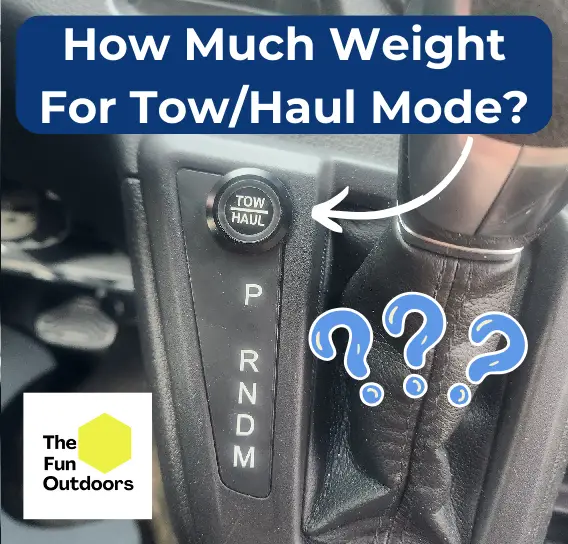When it comes to towing, using the tow/haul mode can make a big difference. Knowing how much weight for tow/haul mode is something most vehicle owners have questions about, as it’s never really made clear by the manufacturer. So how much weight do you need to use tow/haul mode?
Most trucks and SUVs typically require tow/haul mode when pulling weights over 2,000 pounds or over 70% of the vehicle’s towing capacity. It is best to consult your vehicle’s owner’s manual to determine the exact weight limit for tow/haul mode.
In the following sections, we will explore the importance of tow/haul mode, its effect on fuel consumption, and how to use it properly.
Key Takeaways
- You should use tow/haul mode when towing over 2,000 pounds, or when your load is more than 70% of your vehicle’s max towing capacity.
- Using tow/haul mode when it is not necessary can be detrimental to your vehicle’s performance and fuel efficiency.
- Consult your vehicle’s owner’s manual to determine the appropriate weight for tow/haul mode.
How Much Weight For Tow/Haul Mode?
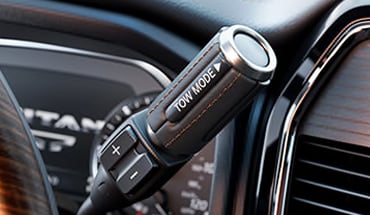
When it comes to towing, activating the tow/haul mode can provide more power and control when hauling heavy loads.
It’s important to know how much weight your vehicle can safely tow with this mode activated.
The weight limit for tow/haul mode varies depending on the vehicle and its towing capacity.
Generally, vehicles can tow up to 70% or greater of their maximum towing capacity with tow/haul mode activated. It’s important to follow the manufacturer’s recommendations and not exceed the maximum towing weight of the vehicle.
For lighter vehicles, such as sedans and SUVs, the weight limit for tow/haul mode is typically around 2,000 lbs or greater.
Heavier vehicles, such as trucks and full-size SUVs, can usually handle much heavier loads before tow/haul mode needs to be activated.
It’s also important to consider the weight distribution of the load when towing with tow/haul mode activated.
Uneven weight distribution can cause handling issues and put unnecessary strain on the vehicle.
Understanding Tow/Haul Mode
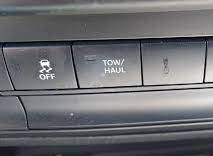
What’s The Purpose of Tow/Haul Mode?
Tow/Haul Mode is a feature found in many modern vehicles that is designed to improve the driving experience when towing heavy loads.
The purpose of this mode is to optimize the engine and transmission performance for towing by adjusting the shift points, gear ratios, and other parameters.
When activated, Tow/Haul Mode can help to reduce wear and tear on the vehicle, improve fuel efficiency, and provide better control over the load.
How Does Tow/Haul Mode Work?
Tow/Haul Mode works by adjusting the vehicle’s transmission shift patterns to better accommodate the demands of towing or hauling heavy loads.
This is accomplished by modifying the Electronic Control Unit (ECU) that controls the transmission, which in turn adjusts the shift points, gear ratios, and other parameters to provide better engine power and control during such operations.
When activated, Tow/Haul Mode boosts torque and delays the engagement of gears, allowing the car to enter higher gears at higher RPM, making way for an overall smoother towing experience.
This helps to prevent frequent gear changes, which can cause unnecessary wear and tear on the transmission and engine.
Tow/Haul Mode and Transmission
Tow/Haul Mode is designed to work in conjunction with the vehicle’s transmission to provide the best possible driving experience when towing heavy loads.
By adjusting the shift points and gear ratios, Tow/Haul Mode helps to prevent the transmission from shifting too frequently or “hunting” for the right gear. This can help to reduce wear and tear on the transmission and improve fuel efficiency.
It is important to note that while Tow/Haul Mode can be very useful when towing heavy loads, it is not a substitute for proper vehicle maintenance and safe driving practices.
It is always important to make sure that your vehicle is in good condition before towing, and to follow all recommended safety guidelines when towing or hauling heavy loads.
Importance of Tow/Haul Mode
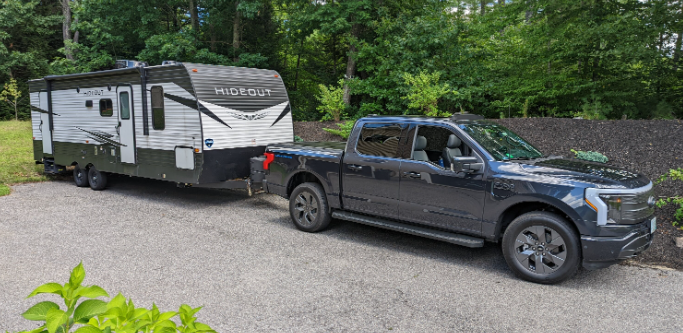
Tow/Haul mode is a feature that is specifically designed to help drivers when towing or hauling heavy loads. It is an essential tool that can make the drive smoother, reduce wear and tear on the vehicle, and help maintain a safe speed.
In this section, we will discuss the importance of Tow/Haul mode and the benefits it provides.
Safety and Stability
When towing or hauling heavy loads, safety and stability are crucial. Tow/Haul mode helps to maintain control of the vehicle by modifying the transmission shift patterns.
This ensures that the vehicle is in the right gear when needed, providing better acceleration and deceleration.
It also helps to prevent the vehicle from shifting unnecessarily, which can cause instability and loss of control.
Engine and Brake Protection
Tow/Haul mode helps to protect the engine and brakes from excessive wear and tear. When towing heavy loads, the engine and brakes are put under significant stress.
Tow/Haul mode modifies the transmission shift patterns, allowing the engine to work more efficiently, reducing the strain on the engine and brakes.
This can help to prolong the life of these components, saving the driver money in the long run.
Improved Performance
Tow/Haul mode provides improved performance when towing or hauling heavy loads.
It modifies the engine and transmission to provide better power and torque, allowing the vehicle to maintain a safe speed and accelerate more easily.
It also provides better engine braking, which can be useful when going downhill, helping to slow the vehicle down without using the brakes excessively.
Determining Towing Weight
Understanding Weight Limits
When it comes to towing heavy loads, it is important to understand weight limits. Every vehicle has a maximum towing capacity, which is the amount of weight it can safely pull.
This capacity is determined by the manufacturer and is based on a number of factors, including the engine size, transmission type, and suspension.
In addition to the maximum towing capacity, there are other weight limits to consider when towing. These include the Gross Vehicle Weight Rating (GVWR), which is the maximum weight of the vehicle and its contents, and the Gross Combined Weight Rating (GCWR), which is the maximum weight of the vehicle, its contents, and the trailer being towed.
To determine the appropriate weight for tow/haul mode, it is important to consider all of these weight limits.
Exceeding any of these limits can be dangerous and can cause damage to the tow vehicle or trailer.
Importance of the Owner’s Manual
One of the best resources for determining the appropriate weight for tow/haul mode is the owner’s manual for your specific vehicle.
Most manufacturers provide guidelines for towing and hauling, including the recommended tow/haul mode weight.
The owner’s manual will also provide information on how to properly set up the vehicle for towing, including any necessary equipment or modifications.
It is important to follow these guidelines to ensure safe and effective towing.
In addition to the owner’s manual, it is also a good idea to consult with a professional, such as a mechanic or towing expert, to ensure that you are towing safely and within the appropriate weight limits.
Tow/Haul Mode’s Effect on Fuel Consumption
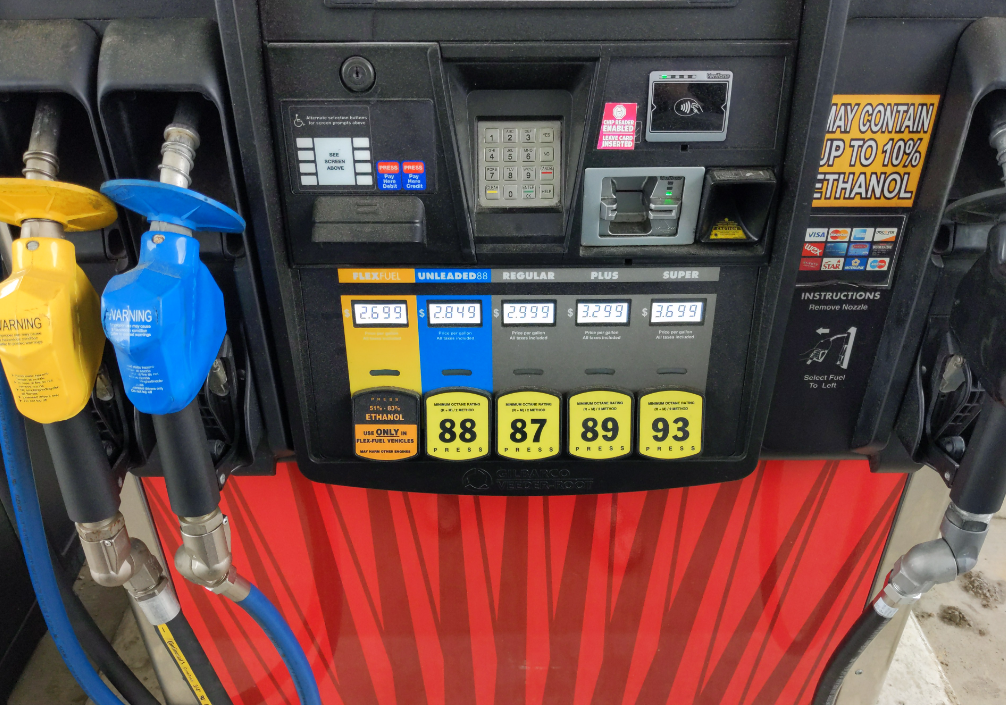
Tow/Haul Mode and Gas Mileage
Towing a load with a vehicle can significantly affect fuel consumption. The use of tow/haul mode can help to mitigate some of the negative effects of towing on gas mileage.
When tow/haul mode is engaged, the vehicle’s transmission is adjusted to better handle the extra weight being towed.
This can result in smoother gear shifting and better control of the vehicle.
Using tow/haul mode can also cause the engine to work harder, which can lead to increased fuel consumption.
The exact impact on gas mileage will depend on several factors, such as the weight of the load being towed, the type of vehicle, and driving conditions.
Driving Conditions Impact on Fuel Economy
Driving conditions can have a significant impact on fuel economy when towing a load.
For example, driving on hilly terrain or in strong headwinds can cause the engine to work harder, resulting in increased fuel consumption.
Similarly, driving at high speeds can also lead to reduced gas mileage.
To minimize the impact of driving conditions on fuel economy, it is important to drive in a manner that is appropriate for the load being towed.
This may mean driving at a slower speed or avoiding steep inclines whenever possible.
In general, it is important to be aware of the impact that towing a load can have on gas mileage.
Using Tow/Haul Mode
When towing heavy loads, activating the tow/haul mode can help improve the driving experience.
This section will cover how to use tow/haul mode, when to use it, and other relevant information.
Activating Tow/Haul Mode
To activate tow/haul mode, the driver can press a button located on the dashboard of the vehicle. This button may be labeled as “tow/haul” or have an icon of a truck towing a trailer.
Once activated, the vehicle’s transmission will adjust to provide more power and torque, making it easier to tow heavy loads.
When to Use Tow/Haul Mode
Tow/haul mode should be used when towing heavy loads, typically over 1,000 pounds.
This mode is especially useful when driving on hilly terrain or when towing up steep inclines.
It can also be helpful when towing in stop-and-go traffic or when driving in adverse weather conditions.
Before towing any load, it’s essential to check the vehicle’s owner’s manual to determine the exact weight limit for tow/haul mode.
Most trucks and SUVs typically require the tow/haul mode when pulling weights over 2,000 pounds, or when the tow load exceeds 70% of the vehicle’s max tow capacity.
Conclusion
In conclusion, tow/haul mode is an essential feature for modern trucks and SUVs that helps adjust the vehicle’s transmission for better performance when towing or hauling heavy loads.
The weight limit for tow/haul mode varies depending on the make and model of the vehicle, but most trucks and SUVs require it when pulling weights over 2000 pounds or more than 70% of the vehicle’s towing capacity.
When you activate the tow/haul mode, it boosts torque and delays the engagement of gears, allowing the car to enter higher gears at higher RPM, making way for an overall smoother towing experience.
This feature eases the strain on the vehicle’s powertrain and braking system, ensuring smoother shifts, preventing frequent gear changes, and providing better engine power and control during such operations.
It is important to note that while tow/haul mode can make towing less stressful, it does not increase the vehicle’s towing capacity.
The weight limit for towing is determined by the manufacturer and should always be followed to ensure safety on the road.
Overall, tow/haul mode is a useful feature that can make towing and hauling heavy loads easier and more comfortable.
By understanding the weight limit for tow/haul mode and following the manufacturer’s guidelines, drivers can ensure a safer and more efficient towing experience.

